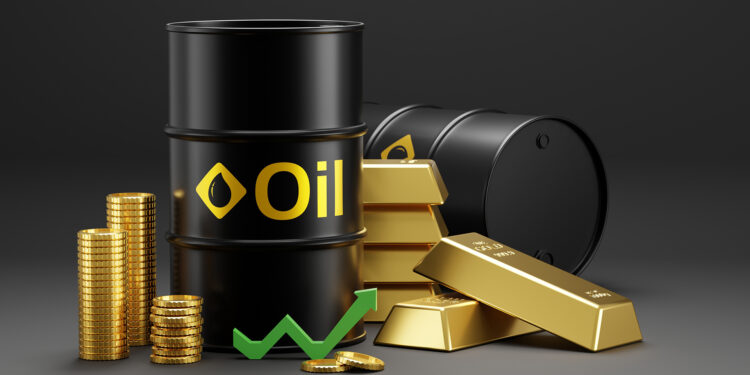10/23/2024–|Last updated: 10/23/202412:18 AM (Mecca time)
Uncertainty in the US presidential election scene and the escalation of Israel’s war on Gaza and Lebanon, as well as expectations of a US interest rate cut, continued to guide the markets during today’s trading, as gold and the dollar continued to rise while oil prices declined under the pressure of increasing US crude stocks.
gold
Gold prices rose to new record levels today, driven by increasing demand for safe haven assets in light of the uncertainty surrounding global conditions due to conflicts in the Middle East and the approaching US elections.
The price of gold in instant transactions recorded $2,755.14 per ounce, at the time of writing the report, after recording the highest level ever at $2,755.48 earlier in the session.
US gold futures rose 0.35% to $2,769.40.
Gold is usually a hedge against uncertainty in economic and geopolitical conditions.
A new Reuters/Ipsos poll showed that US Vice President, Democratic Party candidate Kamla Harris, is slightly ahead of her Republican rival, Donald Trump, by 46% versus 43%.
In the Middle East, Israel confirmed that it had assassinated Hashem Safi al-Din, who was likely to succeed the Secretary-General of the Lebanese Hezbollah, Hassan Nasrallah, whom it also assassinated last month.
Since last month, the Federal Reserve (the US central bank) began a monetary easing cycle by reducing interest rates by 50 basis points, and the Fed Watch CME tool showed that the odds indicating that the US central bank will take a similar step next month have faded, but traders see a 100% chance. 92% to reduce by a quarter of a percentage point, and the decline in interest rates increases the attractiveness of gold, which does not generate a return.
As for other precious metals, silver fell in spot transactions by 0.5% to $34.66 per ounce after reaching its highest level since late 2012 at $34.87 in the previous session.
Platinum rose 0.4% to $1,035.62 an ounce, and palladium fell 0.4% to $1,078.14.
Dollar
The US dollar rose to its highest level in two and a half months today as investors adjusted their bets on a gradual cut in interest rates while continuing to closely monitor the US presidential election race.
The yen witnessed the largest movement among currencies and fell to 152 against the dollar for the first time since July 31, as the dollar and the yield on US Treasury bonds continued to rise.
The dollar index rose over 3 weeks to record its highest levels since August 2 at 104.9, with expectations of a sharp rate cut in the Federal Reserve (the US central bank) dissipating after a group of promising economic data.
The dollar was trading at 152.40 yen, up 0.88%.
The dollar index settled overall at 104.34, and rose more than 3% this month.
In its most recent transactions, the euro recorded a decline to $1.0779, the lowest level since last July.
Oil
Oil prices fell today after data showed that US crude inventories increased more than expected, while the market continues to monitor diplomatic efforts in the Middle East as Israel continues to launch attacks on Gaza and Lebanon.
Brent crude futures fell 40 cents, or 0.53% to
$75.63 per barrel, and US West Texas Intermediate crude futures fell 42 cents, or 0.59%, to $71.33 per barrel.
Market sources, citing figures from the American Petroleum Institute yesterday, Tuesday, indicated that US crude inventories rose by 1.64 million barrels last week, which affected prices, and analysts expected an increase of 300,000 barrels in crude inventories.
Meanwhile, gasoline and distillate inventories fell by 3.5 million barrels.
The US government’s official oil inventory data is scheduled to be released on Wednesday.
In the Middle East, US Secretary of State Anthony Blinken held “lengthy talks” with Israeli Prime Minister Benjamin Netanyahu and senior Israeli leaders, urging them to bring more humanitarian aid into Gaza.
Yesterday, Goldman Sachs expected oil prices to average $76 a barrel in 2025 based on a moderate surplus of crude and spare capacity among producers in OPEC+, which includes the Organization of the Petroleum Exporting Countries (OPEC) and allies led by Russia.
Oil found some support in light of signs of recovery in oil demand from China, the world’s largest importer of crude oil, amid Beijing’s efforts to stimulate the world’s second-largest economy, and some analysts recently raised oil demand expectations.



